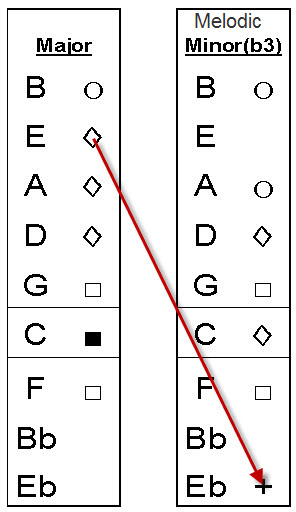Major and Minor Keys
<<Chord Structure Connectors>>
Major and Minor Keys
Let’s have another look at the family of chords we would expect in a piece of music in C Major:
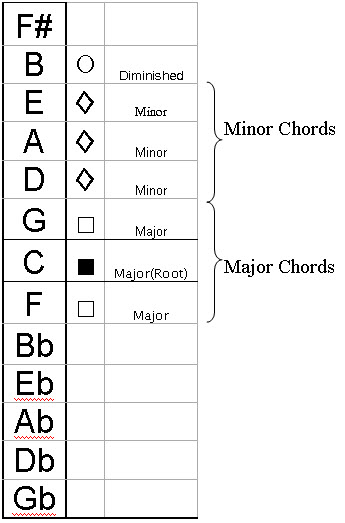
Chords in C
This chart represents the chords that arise naturally from the scale of C. If a piece of music were to have no accidentals (sharps or flats outside the key signature) then these chords and their 7ths would be the only chords available. This means that in a SeeChord chart, we expect most of the movement to happen above the root note, with the one exception of F.
Lets now have a look at another Bach Prelude. This time it is Prelude no.2 from Book 2 of the Well Tempered Clavier. It is in C minor.
[seeChordViewer src=”/content/Application/Major and Minor keys/deploy”]
This time we can see that the family of chords used in a minor key is different and is more likely to be beneath the tonic in a SeeChord chart.
The fundamental change between major and minor is the flattened 3rd.
Here is the chart representing the family of chords that arise from flattening an E to an Eb in the key of C:
|
|
Obviously the tonic (C) is now a minor chord, but other changes are also apparent. The E chord is gone and is replaced by an augmented (+) Eb chord. Also the A chord is now diminished rather than minor. Although it would be unusual to write a piece using purely this type of minor, it is interesting to see how the chords have changed. Lets take it one step further by flattening the 6th to give the family of chords used in a harmonic minor scale.
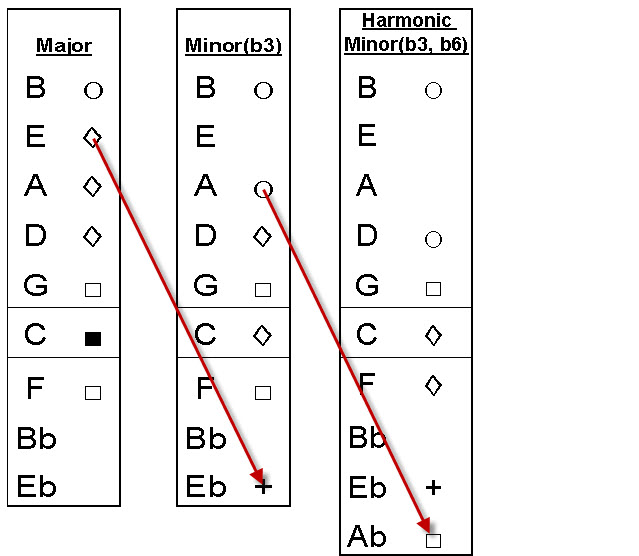
Harmonic Minor
The changes now are the addition of the Ab major chord which has replaced the A diminished chord, the D min has become D dim and the F major has become F minor. Finally let’s see what happens when we flatten the 7th note of the scale (B)
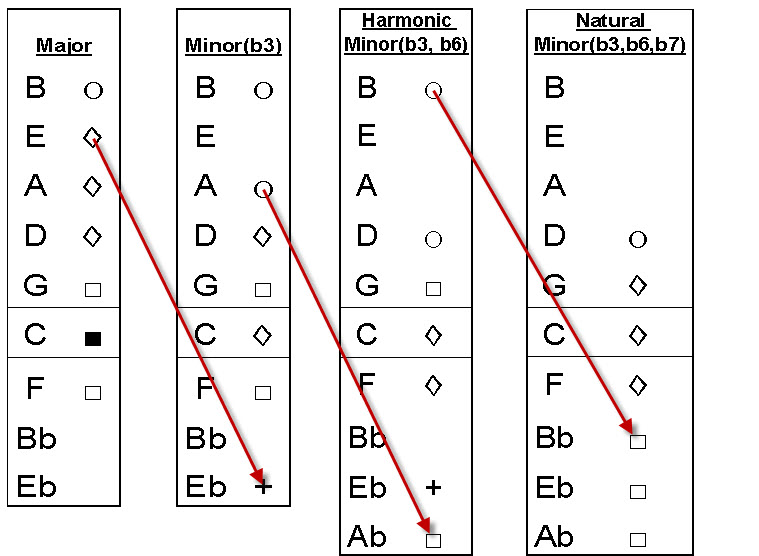
Natural Minor
Now the B chord has become a Bb chord , the G major a G minor chord and the Eb augmented has become an Eb major chord. Order has been restored and we find ourselves with the same pattern of chords as in the original major scale, just shifted down. This is no accident as flattening the 3rd, 6th and 7th degrees of the scale will make the scale into the Aeolian minor (another name for natural minor or the descending melodic minor scale). See the page on modes for further explanation of this.
We can see from looking at the families of chords above, that it can be useful to draw on the whole range of chords when writing in a minor key. By shifting between these different minors we can draw on a much larger range of chords than in a major key. The crucial chord that tends to define which notes are used is the fifth, in this case G.
We need G to be a major chord in order to create a “perfect cadence” as shown below. This is a perfect cadence in a minor key.
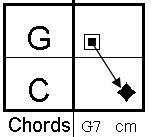
Minor Perfect Cadence
When using the Aeolian or Nautral minor, this chord is not available as we have to use G min instead. This is central to modal music and its often unusual sound.
